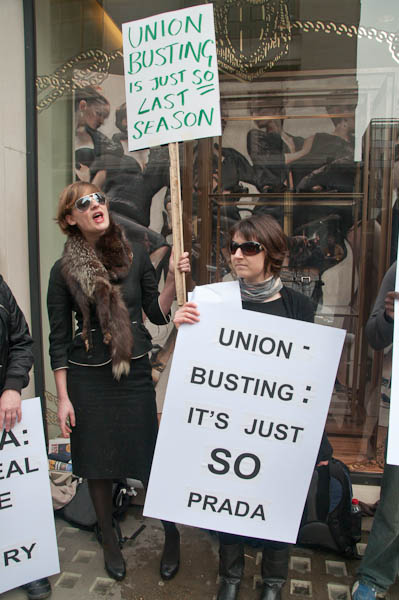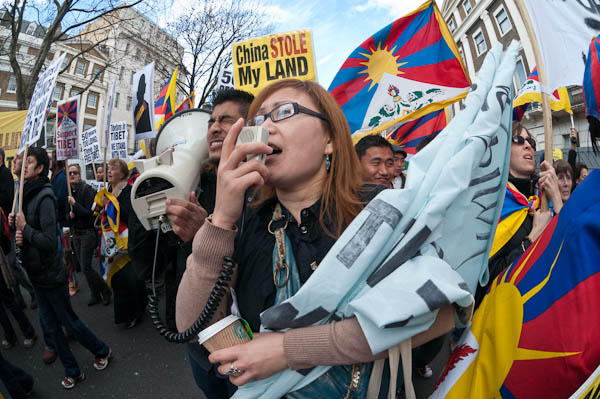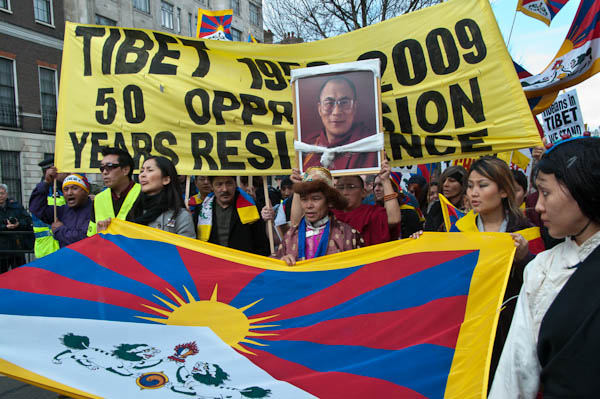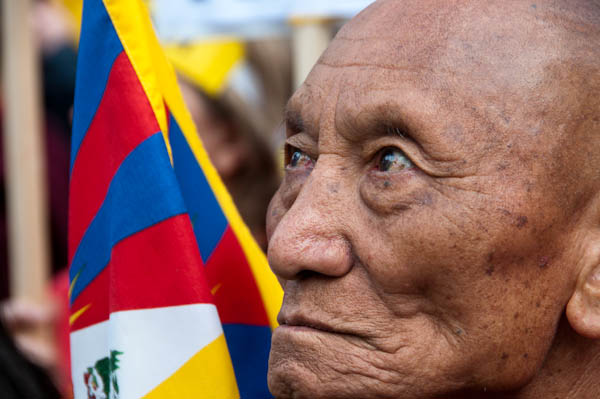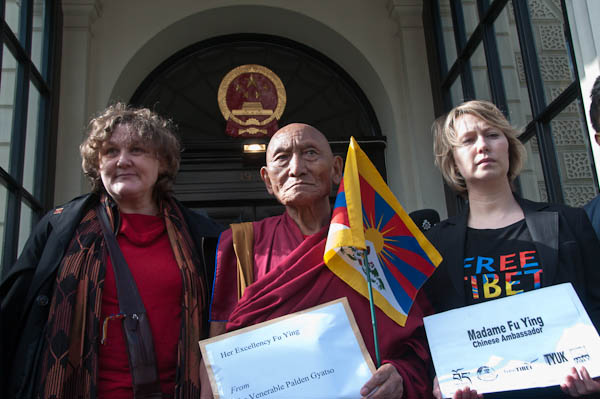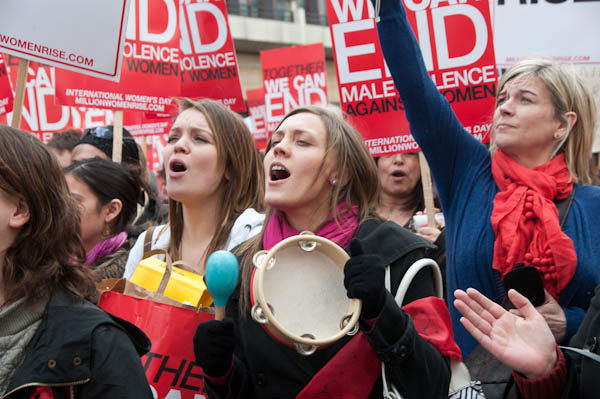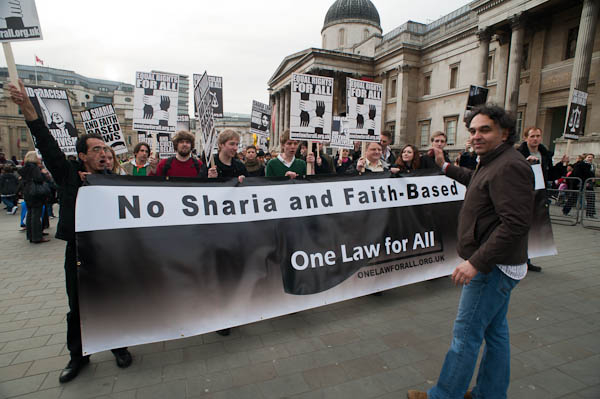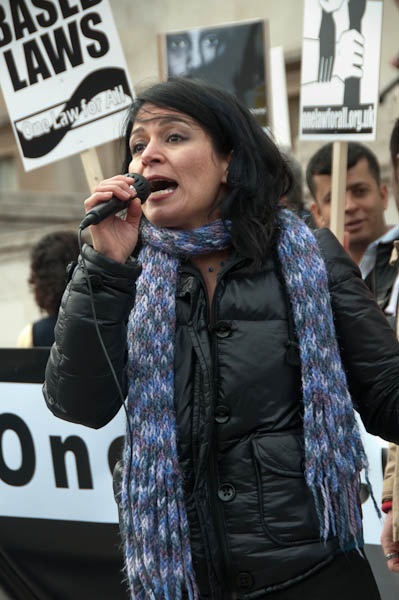Visteon, City & Fashion Victims: On Saturday 4th April 2009 I went to protest in support of the Visteon factory occupation in Enfield, came back the the City but missed a protest over the police murder of newsvendor Ian Tomlinson and then photographed a fashion show protest on Oxford Street against the slave-like labour of workers in Bangladesh producing cheap clothes for Primark.
Solidarity at Visteon Enfield
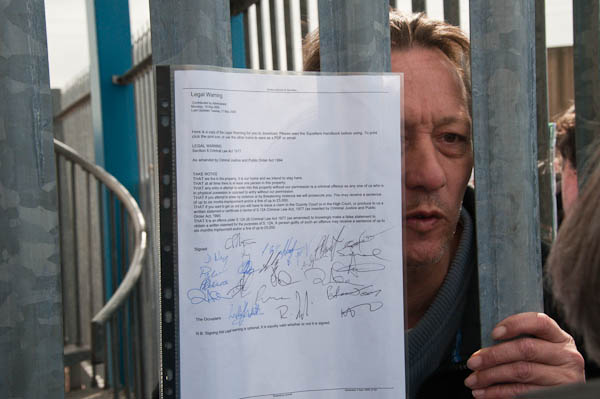
I wrote a few days ago about the Visteon pensions scandal where former Ford workers who were transferred to parts manufacturer Visteon, ‘An Enterprise of Ford Motor Company‘, in 2000 had lost up to half of their pensions when Visteon went into administration on 31st March 2009 when administrators KPMG immediately closed the company down.

Together with workers at the Visteon Belfast site, the workers at Visteon Enfield had occupied their factories and were refusing to leave until Visteon and Ford made good on the firm promises made in 2000 they had that they would receive the same pensions and redundancy arrangements they had enjoyed previously.
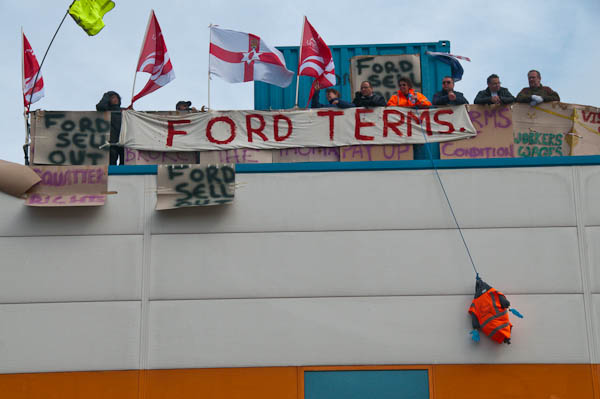
Workers in Belfast had occupied their factory immediately after a 5 minute meeting had told them they had lost their jobs and that they had an hour to take any personal possessions and leave work immediately – without pay. Enfield workers occupied their factory the following day.
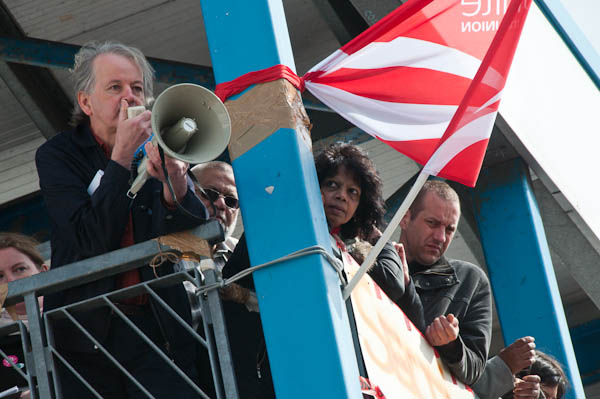
KPMG’s response was to go to the courts and secure a court order for repossession, while Ford simply denied all responsibility in the matter (though five years later were eventually forced by Unite to pay some compensation.)
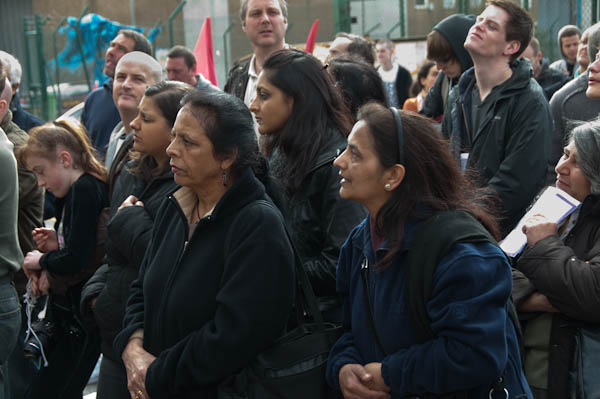
I went to the factory at Ponders End, Enfield along with several hundred other trade unionists and others for a rally outside the plant to show our support for their case. A number of those who spoke at the rally had organised collections for the occupiers in their workplaces, reporting unanimous support for the dismissed workers, and others had also brought practical support – sleeping bags, food and money – to enable the occupation to continue.
More at Solidarity at Visteon Enfield
City Walk – Bank and Bishopsgate.
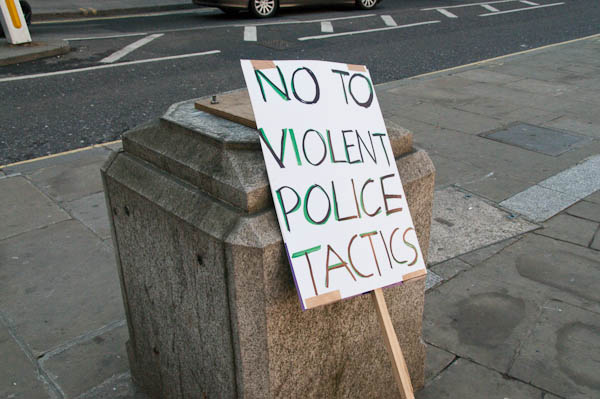
I was later than I had hoped by the time my train from Ponders End reached Liverpool Street and had missed the rally at Bank in memory of the news vendor Ian Tomlinson who died of a heart attack minutes after being attacked and violently pushed to the ground in an unprovoked attack by a riot policeman, dieing from a heart attack minutes after. The murder had been captured on video by an onlooker and The Guardian had published the video – still on their web site.
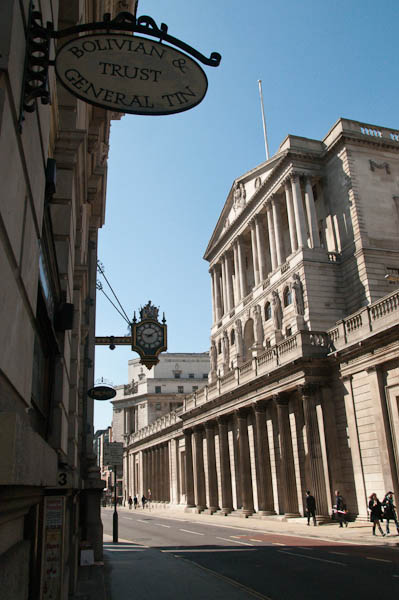
After the rally the protesters had marched away – and I could see and hear a police helicopter following them on the way towards Bethnal Green. I didn’t have time to try and catch up with them, but wandered through some of the streets in the City, including some that Tomlinson had wandered through as he tried to make his way home through the area where police were kettling and attacking the April 1st Financial Fools Day G20Meltdown protesters. On 4th April those streets were empty.
More pictures at City Walk.
Primark – Fashion on the Cheap from Sweatshops
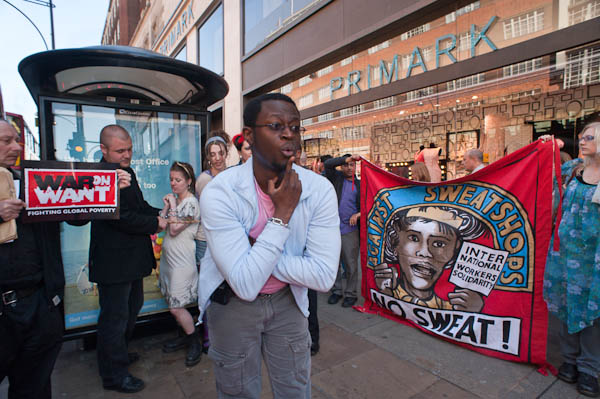
War on Want and No Sweat were drawing attention to Primark profiting from selling clothes made by sweated labour in Bangladesh with a ‘fashion show’ outside the company’s flagship Oxford Street store.
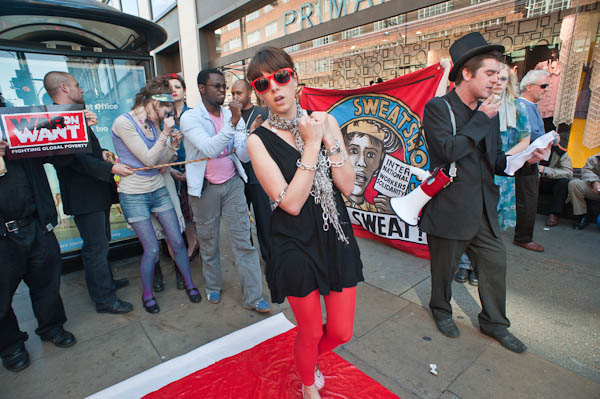
Models used the pavement as a catwalk, walking in chains “to symbolise the slave labour conditions of the Bangladeshi workers who make the cut-price fashions on sale at Primark. Workers who make the clothes earn as little as 7p an hour and work up to 80 hours a week.”
The Primark store opened here in 2007 and flourished as the recession made people turn to cheaper suppliers with their profits in the year to September 2008 up by up by 17% at £233 million.

Notices in the store windows claimed they “care about the conditions of the workers who make their clothes, but the reports by War on Want tells a very different story. These clothes are only cheap because those who make them get poverty pay, work long hours and get sacked if they try to organise or ask for improvements in their dangerous and unhealthy working conditions.”

Although the links on the My London Diary post are now out of date, War on Want are still campaigning for garment workers around the world including in Bangladesh, as are No Sweat.
In 2009 I commented:
Primark and others could still have a moral and reasonably profitable business if they restrained their greed and ensured that the workers who make their clothes worked in reasonable conditions and got a living wage – which in Bangladesh is only around £45 a month. But that is over three times what workers making clothes for Primark are currently paid.

Primark’s profits continue to rise, and although it claims it has “improved working conditions and implemented ethical initiatives, reports and investigations suggest that worker exploitation in its supply chain, including issues like low wages and unsafe working conditions, unfortunately still persists” according to Google’s Generative AI.
More at Primark – Fashion from Sweatshops.
Flickr – Facebook – My London Diary – Hull Photos – Lea Valley – Paris
London’s Industrial Heritage – London Photos
All photographs on this page are copyright © Peter Marshall.
Contact me to buy prints or licence to reproduce.

